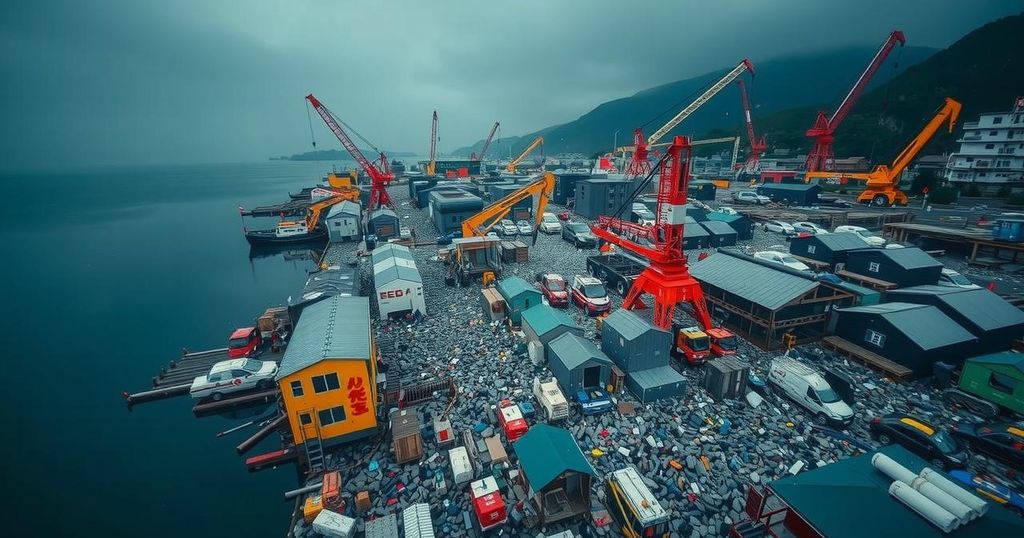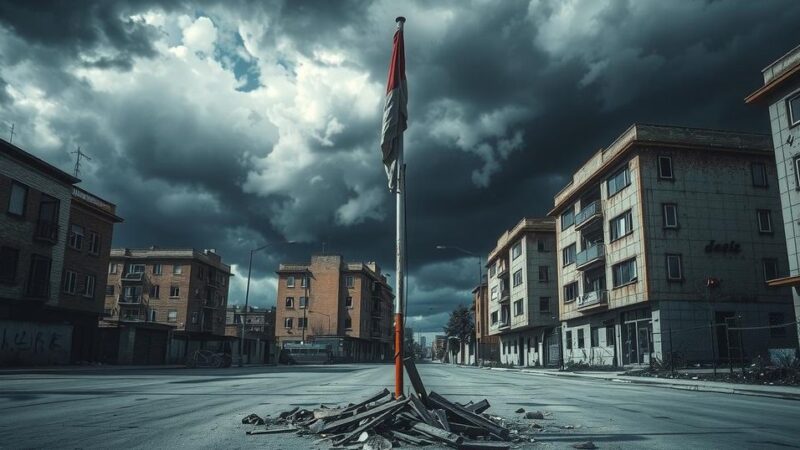On March 11, 2011, Japan was struck by a devastating earthquake and tsunami, prompting immediate government and international relief efforts. Rescue operations faced significant challenges due to widespread destruction and adverse weather conditions. Many individuals were displaced, living in inadequate conditions while recovery efforts progressed. The Japanese government allocated substantial financial resources for reconstruction, and, despite economic hurdles, efforts have been made to restore and enhance infrastructure in the affected regions.
In the immediate aftermath of the catastrophic earthquake and tsunami that struck Japan on March 11, 2011, substantial emergency response efforts were initiated by the Japanese government and various international entities. Prime Minister Kan Naoto promptly established an emergency command center in Tokyo while mobilizing a significant contingent of approximately 100,000 members of the Japanese Self-Defense Force to participate in rescue operations. The United States military and numerous nations, including Australia, China, and South Korea, dispatched search-and-rescue teams and provided humanitarian assistance, while organizations such as the Red Cross contributed funding and resources to aid recovery efforts. Despite these efforts, rescue operations faced considerable challenges due to widespread destruction in both land and infrastructure, coupled with unpredictable weather that hampered access to affected areas. The scale of devastation was monumental, leaving vast regions devoid of entire communities, buried under debris and mud. As rescuers navigated through these disaster zones, the focus shifted from saving lives to recovering the deceased, as the sea tragically began to return bodies previously swept away. Despite the immediate response’s urgency, the aftermath witnessed hundreds of thousands displaced and living in shelters under dire conditions with limited access to essential supplies. Particularly alarming was the deteriorating situation at the Fukushima nuclear facility, which compelled many residents to evacuate the vicinity and exacerbated the crisis with rising numbers of displaced individuals. As the days progressed, temporary housing solutions were implemented, with many survivors relocating into prefabricated units across the Tōhoku region. By mid-2013, over 300,000 residents remained in temporary accommodations, with countless families still affected by the repercussions of the Fukushima evacuation zone. Recovery efforts quickly extended beyond immediate relief; major infrastructure repairs commenced, restoring transportation networks and utilities throughout northern Honshu. However, challenges persisted with power supply instabilities tied to Fukushima’s operational issues. In the aftermath, Japan’s economy faced significant downturns in its manufacturing sectors, particularly in technology and automotive production. Recovery was gradual, and by early 2012, industrial output had rebounded to pre-disaster levels. Recognizing the scale of reconstruction needed, the Kan and Noda administrations introduced and approved significant disaster-related supplemental budgets totaling approximately $155 billion, earmarked primarily for reconstruction. The establishment of a dedicated Reconstruction Agency aimed to facilitate long-term recovery efforts, projected to span a decade. By early 2015, significant progress was reported, with most disaster debris cleared, and major infrastructure projects, such as seawall constructions, underway in the devastated areas.
The 2011 Japan earthquake and tsunami, known as the Tōhoku earthquake, unleashed unprecedented devastation across the coastal regions of Japan. Occurring in the context of a rapidly globalizing world, the disaster required an emergency response on national and international levels, uncovering systemic vulnerabilities in disaster preparedness and response mechanisms. The crisis led not only to immediate humanitarian needs but also highlighted the paradox of technological advancement juxtaposed against the backdrop of environmental vulnerability. With Japan being highly technologically advanced yet facing natural disasters, the recovery efforts became a focal point for assessing governmental, international, and humanitarian response effectiveness, alongside long-term strategies for disaster mitigation and recovery.
In conclusion, the earthquake and tsunami of 2011 prompted an extensive global response, marked by mobilization for immediate rescue and long-term recovery efforts. Japan’s experience underscores the critical need for efficient disaster response strategies and the importance of international cooperation in the aftermath of catastrophic events. As reconstruction progresses, it serves as a powerful reminder of resilience amid human suffering and the ongoing necessity for vigilance in disaster preparedness.
Original Source: www.britannica.com






